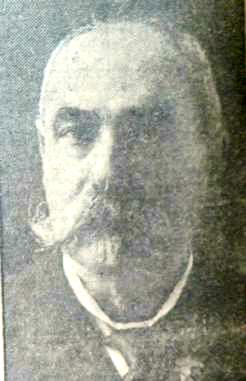

 |
The Ustica Connection |  |
Usticesi immigration to New Orleans began in the decade prior to the outbreak of the U. S. Civil War in 1861. In New Orleans in 1860, nearly 40% of the population was foreign-born, the largest of any of the Southern cities (i). Most were Irish, German, French and British citizens. Italians at that time comprised not even 1% of the total population of the city, but like the other foreign groups, they proceeded to form into separate military companies in support of the Confederate South. A group of Italians in New Orleans organized into the Italian Guards, a division of the three European Brigades. The European Brigades were formed to defend the city which was left virtually unprotected as Confederate troops positioned themselves at the mouth of the Mississippi River to confront the likely advance of Union forces from that vantage. The Italian Guards were comprised of 284 men, of which 85 bear surnames common in Ustica at that time. Their role in the Civil War would be short-lived but very important in sparing New Orleans from the ravages of the conflict. The Confederate troops at the mouth of the River fell to Union troops on April 24, 1862. In the following 6 days before the Union troops entered the city, the mayor of New Orleans charged the men of the European Brigades to maintain civil order in the city at a tense time when some were calling for the city to be razed rather than turned over to the Union (ii). On April 30, 1862 with the transition of control complete, the European Brigades had performed their duties well and the city had been spared any destruction. The European Brigades were thanked for their service and relieved of their policing duties to be replaced by a force of American-born citizens.
The muster roles of the Italian Guards are outstanding in that they present a compiled list of the early Usticese community of New Orleans (iii). The 1860 U.S. Census recorded 896 persons of Italian birth living in New Orleans. Based on these figures, it is quite possible that nearly 10% of the Italian population of New Orleans was from Ustica. Unfortunately, the muster rolls provide only name, rank and company, and occasionally an address. The exhaustive research required to confidently identify the Usticesi men of the Italian Guards has not been done and would take years to complete. Some connections are, however, more apparent and about half of the 85 individuals bearing Usticesi surnames can be easily associated with later civil marriages and obituaries, which are documented at the genealogical website of the San Bartolomeo Society of New Orleans (hhtp://www.ustica.org/genealogy). The entire list of the Italian Guards is also at the website.
| Presented here is just one example of the rich detail of immigrant life that can be reconstructed. Antonio Sidoti was a sergeant in the 2nd Company (v). Antonio became a prominent businessman in the produce importing market. His company, D’Amico, Sidoti & Lewis was founded in 1857 and by 1882 had 6 employees and was doing an annual business of $75,000 to $100,000 (vi), about 1.4 to 1.9 million in U.S. dollars today (vii). Antonio’s 1890 marriage to Rosalia Porretta confirmed that he was the son of Antonino Sidoti and Maria Ailara. Ustica civil records reveal he was born in Ustica on September 17, 1832. Antonio Sidoti died in New Orleans on June 12, 1909. His obituary mentions that he was a native of Ustica. His brother Francesco, who served in the Italian Guards as a sergeant of the Sapper Field and Staff Unit (military engineers) (viii), died in New Orleans on September 16, 1894. His death was also record in the Ustica civil records of 1895. |  Antonino Sidoti (iv) |
i Ella Lonn, Foreigners in the Confederacy (Glouchester, MA: Peter Smith, 1965) p. 418
ii Russell M. Magnaghi, “Louisiana’s Italian Immigrants Prior to 1870”, Louisiana History (Winter 1986): p. 65
iii Ella Lonn, Foreigners in the Confederacy (Glouchester, MA: Peter Smith, 1965) p. 418
iv “Obituary of Anthony Sidoti”, The Daily Picayune, New Orleans , LA, 13 June 1909
v Andrew B Booth, Compiled Service Records of Confederate Soldiers Who Served in Organizations from the State of Louisiana, New Orleans, LA, 1920
vi Jno. E. Land, Pen Illustration of New Orleans, 1881 - 1882: Trade, Commerce and Manufacturers (New Orleans, 1882) p. 166
vii Calculated from “Federal Reserve Bank of Minneapolis - Consumer Price Index (Estimate) 1800 - 2000”, [http://minneapolisfed.org/research/data/us/calc/hist1800.cfm], July 2002
viii Andrew B Booth, Compiled Service Records of Confederate Soldiers Who Served in Organizations from the State of Louisiana, New Orleans, LA, 1920